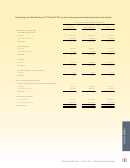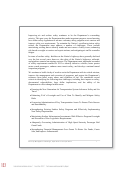Performance And Accountability Report - Fiscal Year 2013 - Federal Aviation Administration - U.s. Department Of Transportation Page 90
ADVERTISEMENT
 1
1  2
2  3
3  4
4  5
5  6
6  7
7  8
8  9
9  10
10  11
11  12
12  13
13  14
14  15
15  16
16  17
17  18
18  19
19  20
20  21
21  22
22  23
23  24
24  25
25  26
26  27
27  28
28  29
29  30
30  31
31  32
32  33
33  34
34  35
35  36
36  37
37  38
38  39
39  40
40  41
41  42
42  43
43  44
44  45
45  46
46  47
47  48
48  49
49  50
50  51
51  52
52  53
53  54
54  55
55  56
56  57
57  58
58  59
59  60
60  61
61  62
62  63
63  64
64  65
65  66
66  67
67  68
68  69
69  70
70  71
71  72
72  73
73  74
74  75
75  76
76  77
77  78
78  79
79  80
80  81
81  82
82  83
83  84
84  85
85  86
86  87
87  88
88  89
89  90
90  91
91  92
92  93
93  94
94  95
95  96
96  97
97  98
98  99
99  100
100  101
101  102
102  103
103  104
104  105
105  106
106  107
107  108
108  109
109  110
110  111
111  112
112  113
113  114
114  115
115  116
116  117
117  118
118  119
119  120
120  121
121  122
122  123
123  124
124  125
125  126
126  127
127  128
128  129
129  130
130  131
131  132
132  133
133  134
134  135
135  136
136  137
137  138
138  139
139  140
140  141
141  142
142  143
143  144
144  145
145  146
146  147
147  148
148  149
149  150
150 safe and efficient nationwide system of public airports.
competition within the public sector in the performance of a
These grants fund approximately one-third of all capital
wide variety of support services.
development at the nation’s public airports, and are
Other Funds. The consolidated financial statements include
¢
administered through the Airport Improvement Program.
other funds such as Aviation Overflight User Fees. Aviation
Facilities and Equipment-AATF. The Facilities and
Overflight User Fees is a “special” fund from dedicated
¢
Equipment funds are the FAA’s principal means of
collections whose receipts come from charges to operators
modernizing and improving air traffic control and
of aircraft that fly in U.S. controlled airspace, but neither take
airway facilities. These funds also finance major capital
off nor land in the United States. Other funds also include
improvements required by other the FAA programs as
Facilities, Engineering & Development General Fund and
well as other improvements designed to enhance the
General Fund Miscellaneous Receipts accounts established
safety and capacity of the national airspace system.
for receipts of non-recurring activity, such as fines, penalties,
fees, and other miscellaneous receipts for services and
Research, Engineering and Development-AATF. Research,
¢
benefits.
Engineering, and Development funds finance long-term
research programs to improve the air traffic control
The FAA has rights and ownership of all assets reported in these
system.
financial statements. The FAA does not possess any non-entity
Operations General Fund and Operations-AATF. Operations
assets.
¢
finances operating costs, maintenance, communications,
and logistical support for the air traffic control and air
C. Basis of Accounting
navigation systems. It also finances the salaries and costs
Transactions are recorded on both an accrual accounting basis
associated with carrying out the FAA’s safety and inspection
and a budgetary accounting basis. Under the accrual method,
and regulatory responsibilities. Operations-AATF is financed
revenues are recognized when earned, and expenses are
through transfers from the AATF. For administrative ease in
recognized when a liability is incurred, without regard to receipt
obligating and expending for operational activities, those
or payment of cash. Budgetary accounting facilitates compliance
funds are then in turn transferred to the Operations General
with legal requirements on the use of federal funds. All material
Fund, which is supplemented by appropriations from the U.S.
intra-agency transactions and balances have been eliminated for
Treasury. Expenditures for operational activities, whether
presentation on a consolidated basis. However, the Statement
originally funded by the AATF or the General Fund of the U.S.
of Budgetary Resources is presented on a combined basis, in
Treasury, are generally made from the Operations General
accordance with OMB Circular No. A-136.
Fund.
Aviation Insurance Revolving Fund. Revolving funds are
Intra-governmental transactions and balances result from
¢
accounts established by law to finance a continuing cycle
exchange transactions made between the FAA and another
of operations with receipts derived from such operations
federal government reporting entity, while those classified as
usually available in their entirety for use by the fund
“with the public” result from exchange transactions between
without further action by the U.S. Congress. The Aviation
the FAA and non-federal entities. For example, if the FAA
Insurance Revolving Fund, a fund from dedicated collections,
purchases goods or services from the public and sells them to
provides products that address the insurance needs of the
another federal entity, the costs would be classified as “with the
U.S. domestic airline industry not adequately met by the
public,” but the related revenues would be classified as “intra-
commercial insurance market. The FAA is currently providing
governmental.” This could occur, for example, when the FAA
war risk insurance which includes hull loss and passenger,
provides goods or services to another federal government entity
crew, and third-party liability coverage as required by the
on a reimbursable basis. The purpose of this classification is to
Homeland Security Act of 2002 as amended by the Federal
enable the federal government to prepare consolidated financial
Aviation Administration Extension Act of 2011 (see Note 16).
statements, and not to match public and intra-governmental
Current insurance coverage expires on December 31, 2013.
revenue with costs that are incurred to produce public and intra-
governmental revenue.
Administrative Services Franchise Fund (Franchise Fund).
¢
The Franchise Fund is a revolving fund designed to create
88
|
|
Federal Aviation Administration
Fiscal Year 2013
Performance and Accountability Report
ADVERTISEMENT
0 votes
Related Articles
Related forms
Related Categories
Parent category: Business









